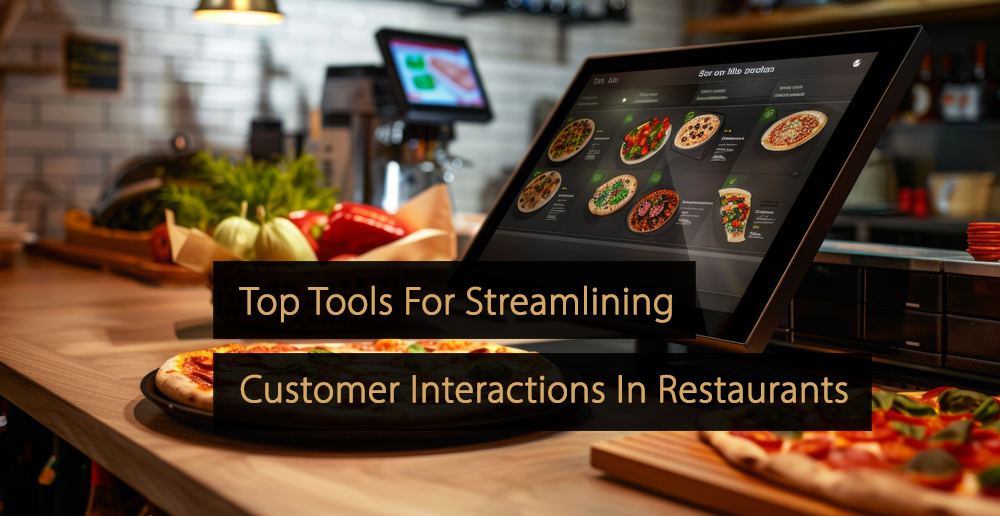Marketing serves an incredibly important purpose for restaurants because it is the main way to establish brand recognition, attract customers and build a reputation. Nevertheless, marketing needs to be strategic, and selecting the right target market for restaurant advertising and marketing activities is essential. In this article, you can learn about market segmentation and how to pinpoint the right market segment to focus efforts on.
Table of Contents:
- What is the Restaurant Industry?
- What is a Marketing Strategy for Restaurants?
- What is a Target Market for Restaurants?
- Segmentation of Target Market for Restaurants
- Segmentation Strategies: Finding the Right Target Market for Restaurant
- Steps to Determine the Target Market for Restaurants
- Ways to Find the Correct Target Market for a Restaurant?
- Marketing Trends for Use on Your Restaurant Target Market
- Finding the Right Target Market for Restaurants and the Role of Technology
- All You Need to Know About Restaurant Management
What is the Restaurant Industry?
Before choosing the right target market for restaurant marketing purposes, it is worth establishing what the restaurant industry is and how it can be defined. It should also be noted that the restaurant industry forms part of the wider hospitality industry, including lodgings, travel, and tourism. In simple terms, the restaurant industry is the industry that centers around the provision of food services within a restaurant setting.
The word restaurant meaning a business that allows customers to order food and eat the food on-site. Thus, the restaurant industry includes conventional restaurants, fast food restaurants, cafes, bars, and more. In the “Restaurant Industry: Overview, Types, Examples and More” article, you will be able to read more details about how restaurants are defined, the different types of restaurants that fall under the industry umbrella, some of the key technology trends, the importance of Michelin Guides, and a whole lot more besides.
What is a Marketing Strategy for Restaurants?
A marketing strategy for a restaurant can be defined as a broad strategy or plan that uses communication techniques to establish brand recognition, attract customers, build a reputation, or define what the business has to offer. For restaurants, most marketing efforts will be intended to attract guests. A good strategy should be designed considering the restaurant’s target market and should include multiple focus areas.
Examples of focus areas include social media marketing, online advertising, television advertising, billboard advertising, and email marketing. However, marketing can also include reputation management, delivering a high level of customer service, optimizing the design of your restaurant, and adopting the right pricing strategy. The marketing channels you use and the messaging you put out will ultimately depend on your goals, who your restaurant is intended to appeal to, and how your target market can be most easily reached.
What is a Target Market for Restaurants?
In simple terms, the target market for a restaurant is the segment of people that the restaurant is most likely to appeal to. Once the target market has been identified, almost all aspects of running the business should be centered around this core demographic’s needs, wants, and expectations. For example, marketing efforts can be tailored to the restaurant’s target market in terms of marketing content and where the content appears.
Research can be carried out to identify the best ways to reach this group through traditional marketing and various forms of online or digital marketing. Some restaurants will have a clear idea of the customer base they are trying to reach. For others, carrying out a target market analysis will be necessary. This will involve analyzing your restaurant, including its food, services, and prices, and then assessing how those things will fit into a market of possible restaurant customers.
Segmentation of Target Market for Restaurants
Market segmentation divides the market into groups that share qualities, traits, characteristics, or lifestyle factors. Often, this involves taking the broad market of available customers and separating them into smaller groups so that the right customers can be targeted with marketing material.
The market can be segmented in any way valuable for your business, but there are some common ways to group people together. Demographic segmentation, for example, divides the market based on factors like age, gender, income and occupation. The market can also be segmented based on location, behavioral factors, and shared interests.
Video: Target Market Segmentation
Segmentation Strategies: Finding the Right Target Market for Restaurant
There are a variety of established marketing segmentation strategies, which can be invaluable for finding the right target market for restaurants and other businesses in the hospitality sector. These include:
Mass Marketing
Mass marketing is the broadest approach to marketing, focused on reaching as much of the market as possible. However, not all restaurants have a broad appeal, so it can be a wasteful approach, where people are targeted despite having very little in common with the identified target market of your restaurant.
Segment Marketing
Segment marketing involves focusing marketing efforts on one segment of the market at a time. Once you have found the right target market for a restaurant, breaking it down further allows messaging to be more precisely tailored.
Niche Marketing
Niche marketing requires a restaurant to define a very specific market segment clearly. The audience will be much smaller than with mass marketing, but messages can be designed to appeal to the niche’s very specific needs and preferences. However, if the niche is too narrow, it can hinder the potential for future growth.
Hyper Segmentation
Hyper segmentation is similar to niche marketing, but takes the concept further. With this approach, you attempt to target marketing messages and products or services to a very small and very specific group of individuals. In the age of digital technology, this can even reach the level of one-to-one marketing.
Local Marketing
Finally, local marketing involves focusing marketing efforts on people who reside or work close to your restaurant. This approach focuses on the needs of those nearby and attempts to attract loyal, repeat customers.
Steps to Determine the Target Market for Restaurants
Sometimes some specific steps need to be followed to determine the right target market for restaurant employees to focus on. The key steps for narrowing down a target market are outlined below:
1. Collect Customer Data
If your restaurant runs, you can use existing data to learn more about your customers and what unites them. The amount of information you have available may depend on the type of restaurant you operate and the technology you use. Many restaurant management systems can collect and store valuable customer information.
Identify some common characteristics or traits that many of your existing customers share. This could be where they live, how they make their bookings, whether they dine in or order takeaways, or the size of the parties that visit your restaurant. This can help you identify a restaurant business’s core target market.
2. Gather Social Media Data
Social media platforms can be a goldmine for information about the customers you are most likely to appeal to. Look at your Facebook, Twitter, Instagram, and other social media accounts and analyze the information.
What similarities do your followers share? How are these people interacting with your brand? What types of social media content do people engage with most? Some social media platforms can even provide in-depth analytics about your followers, such as where they are located, where they work, and their interests.
3. Analyse Your Competitors
Another way to narrow down the restaurant’s target market is to look at competitors’ actions. In the local area, you can see who rival restaurants are targeting and how they reach them. From there, you can either use similar techniques to target them or go a different route entirely and differentiate your restaurant.
You can also use this information to optimize your entire approach to marketing. What sort of messaging are other restaurants using? What pricing strategies are they using? Which groups in the area are not currently being targeted by other restaurants? This can help you identify market gaps to position your restaurant.
4. Explain Your Restaurant’s Benefits
The final step to not only choosing the right target market for restaurant marketing, but also using the right messaging involves honing in on what your restaurant has to offer customers. In particular, you need to consider how what you are offering can benefit customers and what makes it different from other options on the market.
Does your restaurant offer more affordable meals than rivals? Is the quality of the food higher? Are you primarily selling the atmosphere of your restaurant? Do you have a cocktail bar, or unique menu items? Consider precisely what you offer a visitor to your restaurant and who this would appeal to.
Ways to Find the Correct Target Market for a Restaurant?
Sometimes, you may change your business strategy, and it can be difficult to know precisely what the target market for restaurant menu items or new services should be. Fortunately, there are ways to approach this:
1. Learn About Your Customers Via Surveys
One of the best ways to understand your restaurant’s target market is to ask them questions directly. In instances where they book online, email surveys are a great option for this, because customers will have time to think about their answers and also to answer honestly without the pressure of responding face-to-face.
Try to be as specific as possible in the questions you ask. What did they like about their last visit to your restaurant? Where is there room for improvement? Would they recommend your restaurant to friends and family? How did they feel about the food? Were they happy with the pricing and the customer service?
2. Carry Out a Focus Group
An effective way to drill down into the thoughts and opinions of customers or potential customers and gain greater clarity on the target market for restaurant advertising is to carry out a focus group.
Simply put, a focus group is an interview where you ask questions to generate a discussion and gather valuable insights. Focus groups can sometimes be more useful than surveys because they allow people to share their opinion, elaborate on it, and explain some nuances.
3. Look for Relevant Case Studies
Case studies are another way to learn about the best target market for restaurants and what that target market may want. Sometimes restaurants have great success by shifting their focus, altering the menu, or branching out to reach a new customer base, and they may then publish a case study explaining their decisions.
In some cases, there may even be relevant case studies from other industries, such as the hotel industry, or the catering industry. Look for case studies that explore relevant concepts and see what insights you can gather.
4. Learn Through Trial and Error
Finally, not all insights on the best restaurant target market will be generated through formal research. Instead, some of the most useful insights can be gathered through trial and error.
You should feel free to experiment with different marketing approaches, pricing strategies, and menu items. It is important to experiment in a controlled way, so that your restaurant does not lose its identity, or drift too far from your established strategies. Still, trial and error can allow you to see what works with your customer base quickly, what does not work so well, and what customers’ priorities are.
Marketing Trends for Use on Your Restaurant Target Market
In addition to identifying the right target market for a restaurant, owners, marketers, and others with decision-making powers need to stay up-to-date with the latest marketing trends. This can include learning how to use restaurant POS systems for marketing, using search engine optimization effectively, and much more.
In the article “Important Restaurant Marketing Trends to Follow in 2023”, you will be able to find out much more about the main marketing trends for restaurants to focus on and why they are so significant.
Finding the Right Target Market for Restaurants and the Role of Technology
Technology can play a key role in finding the right target market for restaurants and helping restaurants optimize their marketing, customer service, and product range. Ultimately, restaurants must invest in technology to deliver the best possible customer experience and make life easier for employees.
The “Latest Restaurant Technology Trends You Need to Know About” article provides a more comprehensive look at the essential restaurant technology trends and the best ways to implement this tech within your business.
All You Need to Know About Restaurant Management
Identifying and analyzing the target market for restaurant marketing is only one part of the wider discipline of restaurant management. A good restaurant manager will also define roles within the business, set expectations, optimize the customer experience, think strategically, and coach others.
In the article “Restaurant Management: Everything You Need to Know”, you can explore the qualities of a great restaurant manager, the importance of good management, education requirements, and more.
Target Market for a Restaurant FAQs
Effective marketing relies on choosing the right target market for your restaurant. Using the techniques and strategies outlined, you can determine whether to use mass marketing, niche marketing, local marketing, or other approaches, and you can make sure you are targeting the right people with the right messages, to attract customers.
More Tips to Grow Your Business
Revfine.com is the leading knowledge platform for the hospitality and travel industry. Professionals use our insights, strategies, and actionable tips to get inspired, optimize revenue, innovate processes, and improve customer experience.Explore expert advice on management, marketing, revenue management, operations, software, and technology in our dedicated Hotel, Hospitality, and Travel & Tourism categories.
This article is written by:
Hi, I am Martijn Barten, founder of Revfine.com. With 20 years of experience in the hospitality industry, I specialize in optimizing revenue by combining revenue management with marketing strategies. I have successfully developed, implemented, and managed revenue management and marketing strategies for individual properties and multi-property portfolios.









Leave A Comment